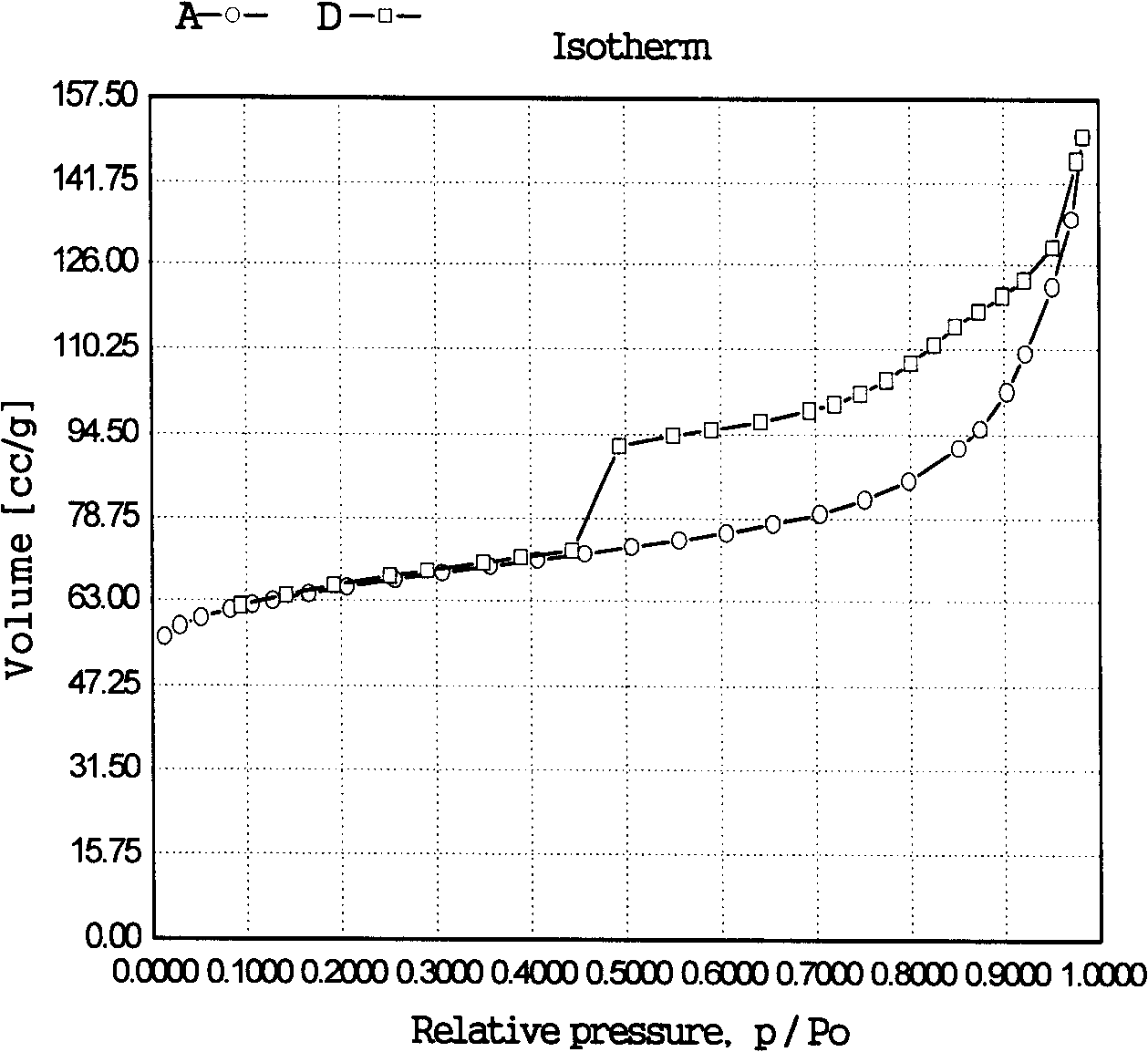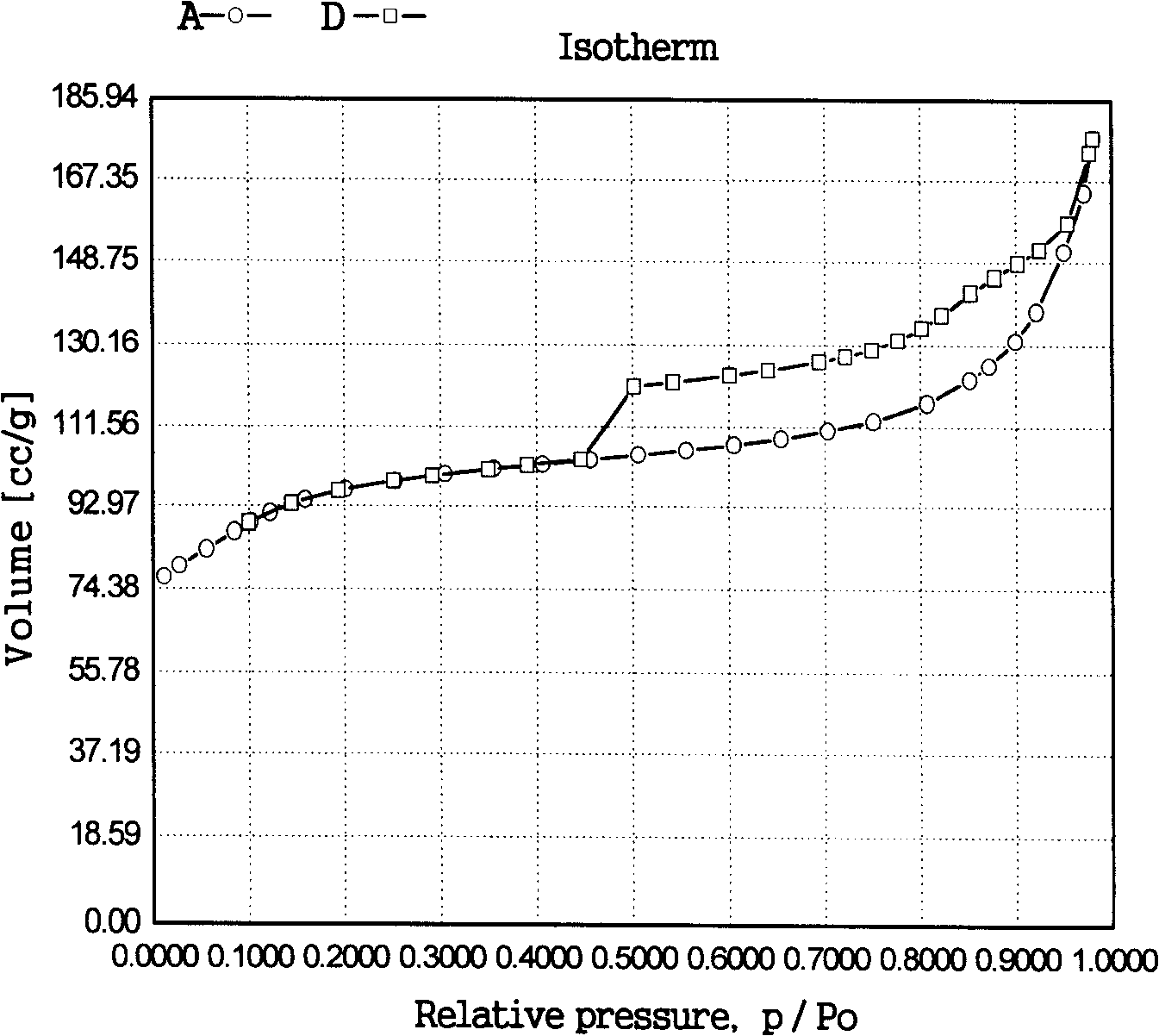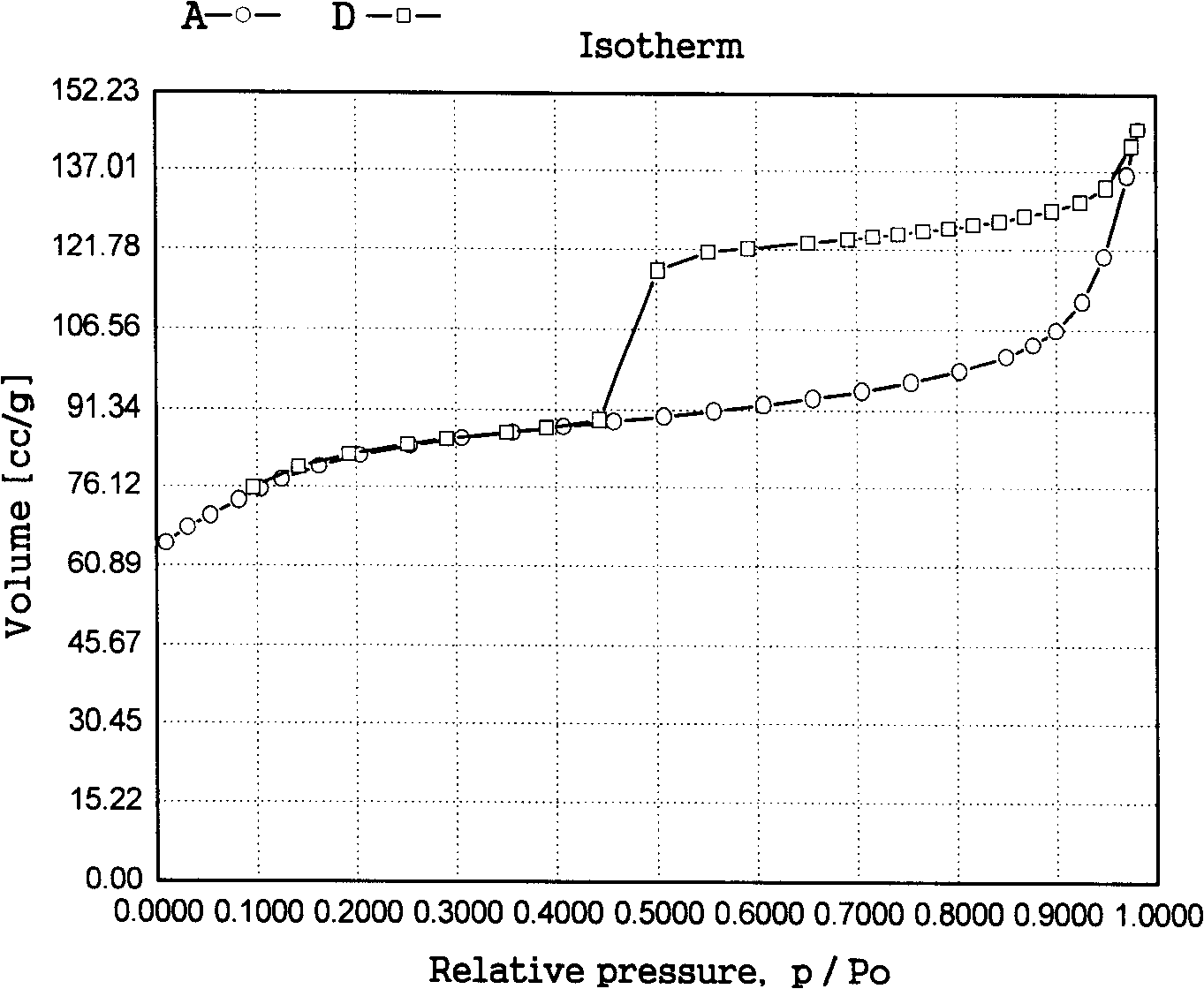Method for catalysis of pimelinketone oxamidine
A technology of cyclohexanone ammonia oxime and cyclohexanone, which is applied in the field of cyclohexanone ammonia oximation catalyzed by titanium silicon materials
- Summary
- Abstract
- Description
- Claims
- Application Information
AI Technical Summary
Problems solved by technology
Method used
Image
Examples
Embodiment 1
[0074] Take 20 grams of titanium silicon molecular sieve TS-1, ammonium nitrate palladium complex solution with a concentration of 0.01g / ml (calculated as palladium atom), and an appropriate amount of hydrazine hydrate and cetyltrimethylammonium bromide and add to the tetrapropyl group Stir and mix uniformly in an aqueous solution of ammonium hydroxide (10% by mass), in which titanium silicon molecular sieve (g): cetyltrimethylammonium bromide (mole): tetrapropylammonium hydroxide (mole): hydrated Hydrazine (mole): ammonium nitrate palladium complex (g, in terms of palladium): water (mole)=100:0.005:0.5:3.0:2.0:1000. Then it was put into a stainless steel sealed reaction kettle and hydrothermally treated at a temperature of 150°C and autogenous pressure for 48 hours. The resultant was filtered, washed with water, dried naturally, and dried at 180°C for 3 hours to obtain the new type of the present invention. Noble metal microporous titanium silicon material A. After characterizati...
Embodiment 2
[0076] Take 20 grams of titanium silicon molecular sieve TS-1, a palladium chloride solution with a concentration of 0.01g / ml (based on palladium atoms), and an appropriate amount of hydrazine hydrochloride and polypropylene, add them to the aqueous solution of sodium hydroxide (15% by mass) and stir. Mix uniformly, in which titanium silicon molecular sieve (g): polypropylene (mol): sodium hydroxide (mol): hydrazine hydrochloride (mol): palladium chloride (g, calculated as palladium): water (mol) = 100: 0.9: 1.8:0.15:0.1:4600. Then it was put into a stainless steel sealed reaction kettle, hydrothermally treated at a temperature of 180°C and autogenous pressure for 24 hours, the resultant was filtered, washed with water, dried naturally, and dried at 110°C for 3 hours to obtain the novel containing material of the present invention. Noble metal microporous titanium silicon material B. After characterization, its composition can be expressed as 8TiO in the form of oxide 2 ·100SiO 2 ...
Embodiment 3
[0078] Add tetraethyl orthosilicate, tetrabutyl titanate, a palladium acetate solution with a concentration of 0.01g / ml (in terms of palladium atom) and Tween 80 to the aqueous solution of tetrapropylammonium hydroxide and butanediamine (quality The percentage concentration is 10%), stir and mix evenly, and the molar composition is silicon source: titanium source: tetrapropyl ammonium hydroxide: butanediamine: palladium source: protective agent: water = 100: 0.03: 0.5: 0.1: 0.05: 0.02:550, silicon source is SiO 2 Calculated, the titanium source is TiO 2 The palladium source is calculated as Pd. Then, it is put into a sealed reactor, and is subjected to a hydrothermal treatment at a temperature of 120° C. and autogenous pressure for 120 hours. The resultant is taken out, filtered, dried, and calcined to obtain an intermediate crystalline material. Transfer the intermediate crystalline material to the remaining filtrate, add an appropriate amount of hydrazine hydrate, and hydrotherm...
PUM
| Property | Measurement | Unit |
|---|---|---|
| length | aaaaa | aaaaa |
| adsorption capacity | aaaaa | aaaaa |
Abstract
Description
Claims
Application Information
 Login to View More
Login to View More - R&D
- Intellectual Property
- Life Sciences
- Materials
- Tech Scout
- Unparalleled Data Quality
- Higher Quality Content
- 60% Fewer Hallucinations
Browse by: Latest US Patents, China's latest patents, Technical Efficacy Thesaurus, Application Domain, Technology Topic, Popular Technical Reports.
© 2025 PatSnap. All rights reserved.Legal|Privacy policy|Modern Slavery Act Transparency Statement|Sitemap|About US| Contact US: help@patsnap.com



